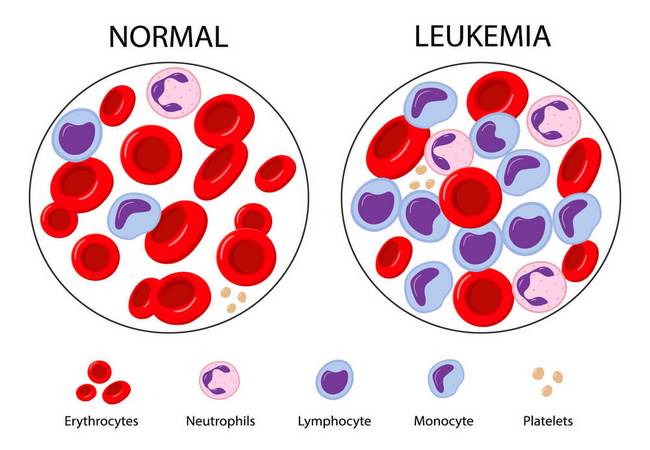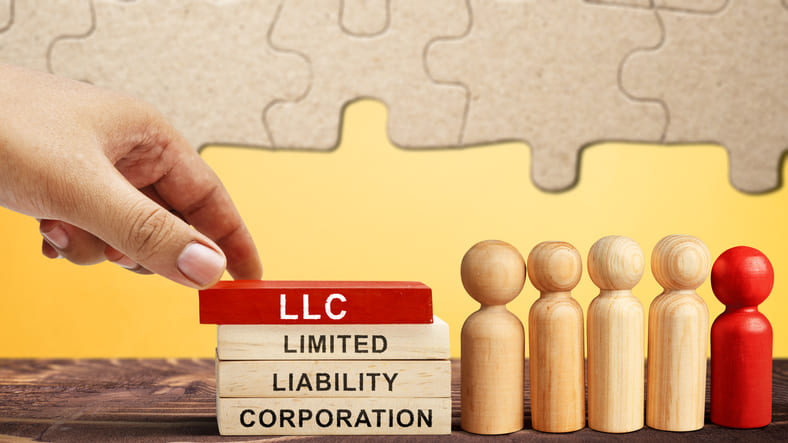[ad_1]
Definition of Leukemia Disease:
Leukemia are the disease in which abnormal proliferation of haemopoietic cells cause progressively increasing infiltration of the bone marrow and other tissues such as lymph node, liver & spleen. It is a disease of abnormal proliferation and maturation of bone marrow which interferes with the production of normal RBCs, WBCs and platelets.

Classification or Types of Leukemia Disease:
Clinical classification of Leukemia Disease:
1. According to Clinical course of disease:
a) Acute,
b) Chronic.
2. According to Types & degree of differentiation of the cell population or cell line predominantly involved.
a) Myeloid,
b) Lymphoid.
It may be explained as –
Acute leukaemia:
- Acute lymphobastic leukaemia (ALL),
- Acute myeloblastic leukaemia (AMI.)
Chronic Leukemia:
- Chronic lympliocytic Leukemia (CLL),
- Chronic mylocytic /granulocytic Leukemia (CGL or CML).
FAB classification: (French, American, British):
1. Acute lymphobastic leukaemia (ALL):
- L1 – small homogenous lymphoblast,
- L2 – heterogenous lymphoblast,
- L3 – large homogenous lymphoblast.
2. Acute myeloblastic leukaemia (AML):
- MO – Myeloblastic leukaemia with minimal differentiation,
- MI – Myeloblastic leukaemia without maturation,
- M2 – Myeloblastic leukaemia with maturation,
- M3 – Hypergranular promyelocytic leukaemia,
- M4 – Myelomonocytic leukaemia,
- M5 -Monocytic leukaemia,
- M6 – Eroythrocytic leukaemia,
- M7-Megakaryoblastic leukaemia.
WHO Classification Of Acute Leukemia:
- Acute myeloblastic leukaemia with recurrent genetic abnormalities,
- Acute myeloblastic leukaemia with multilincage dysplasia,
- Acute myeloblastic leukaemia & myelodysplastic syndrome,
- Acute myeloblastic leukacmia not otherwise specified,
- Acute lymphobastic leukaemia.
Etiology or Causes or Risk Factors of Leukemia:
1. Chromosomal abnormalities.
2. Ionizing radiation –
- X-ray radiation,
- Radiotherapy,
- Atom bomb.
3. Chemicals:
4. Virus-
- HTLV-1 (human T cell lymphotrophic virus type-1).
5. Genetic factor-
- Identical twin of patient with leukemia,
- Down syndrome,
- Blooms syndrome,
- Fanconi’s anaemias.
6. Immunological:
- Immune deficiency states (e.g. hypogammaglobulinaemia).
Clinical Features or Sign and Symptoms of Acute Leukemia:
Symptoms of Acute Leukemia:
1. Feature of anaemia:
- Weakness, fatigue, lassitude, effort intolerance, dyspnòea on exertion.
- Pallor, palpitation, anorexia.
2. Feature of leucopenia:
- Fever,
- Malaise,
- Sore throat,
- Chills,
- Ulceration of mouth & pharynx,
- Sweating,
- Chronic skin infection,
- Recurrent chest infection,
- Pneumonia, diarrhoea, UTI, otitis media, cellulitis.
3. Feature of thrombocytopenia (Mainly by purpuric spot):
- Echymosis,
- Patechiac,
- Epistaxis,
- Bleeding from gum, alimentary tract,
- Sub-conjunctival hge, fundal hge, hacmatemesis, maclena,
- Menorrhagia,
- Hematuria,
- Joint swelling & joint pain, bone pain.
4. General- Fatigue, weight loss, bone pain, cough, Headache or diaphoresis.
Signs of Acute Leukemia:
- Appearance-toxic & ill looking.
- Anaemia-Present
- Pulse – rapid.
- Temp – raised.
- Lymph node – moderately enlarged, non-tender, discrete, tree from skin & underlying structure.
- Bony tenderness.
- Skin (Evidence of bleeding) – Ecchymosis, purpura & Patechiac
- Testicular enlargement.
Clinical Features or Sign and Symptoms of Chronic Leukemia:
Symptoms of Chronic Leukemia:
- Asymptomatic (25%),
- Shortness of breath due to anaemia,
- Abdominal pain & discomfort,
- Tiredness, fatigue, pale, lethargy,
- Weight loss,
- Fever & night sweat,
- Anorexia, nausca, vomiting,
- Headache due to hyperleukocytosis,
- Brusing & bleeding episode (Terminal stage).
Signs of Chronic Leukemia:
- Anaemia – early,
- Spleenomegaly – huge (90%),
- Hepatomegaly (50%),
- Bony tenderness- present,
- A friction rub in splenic infarction,
- Lymphadenopathy unusual,
- Retinal hge due to leukocytosis.
More questions related to this article:
- What do you mean by leukemia?
- What is leukemia?
- Define leukemia.
- Write down the classification of leukemia.
- Give the WHO classification of acute leukemia.
- Write down the etiology of leukemia.
- Write down the causes of leukemia.
- Write down the risk factors of leukemia.
- What are the clinical features of acute leukemia?
- Write down the clinical features of chronic leukemia.
- State the treatment of acute leukemia.
- Describe the nursing management of leukemia
- Write down the nursing management of a child with anemia.

Maria Khatun Mona is a Founder and Editor of Nursing Exercise Blog. She is a Nursing and Midwifery Expert. Currently she is working as a Registered Nurse at Evercare Hospital, Dhaka, Bangladesh. She has great passion in writing different articles on Nursing and Midwifery. Mail her at “[email protected]”
Related
[ad_2]
Source link











